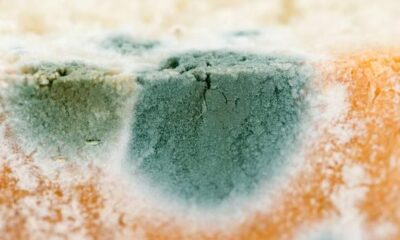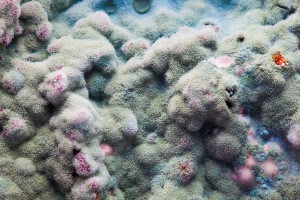Mold Growth and Mold Remediation in Buildings

By Kevin Thole
When a home or business owner identifies mold growth within a building, they must take certain steps to isolate the contaminated materials and to make proper repairs. They must consider appropriate engineering controls to contain the mold and prevent the spores and dust from spreading during the remediation process.
Mold Remediation Containment and Equipment
Containment is used to isolate the contaminated areas, usually behind plastic sheeting. An effective containment strategy is one that prevents spores from spreading during repairs and protects both uncontaminated areas and people who might be in the building. It is, therefore, necessary to include an enter/exit area when designing a containment area. This area, which is called a clean room, will give workers a place to remove their protective gear without risking cross contamination outside the work zones. Usually, professionals put on their Personal Protective Equipment (PPE) before entering the clean room. They then perform their work shift, exit through the clean room and take off their PPE, and then enter the unaffected part of the building. Mold remediation is a very particular process requiring advanced training, and untrained persons should not attempt it. If they do, they risk accidentally spreading mold spores into the unaffected areas of the building.

A HEPA AFD creates negative air pressure within the work zone. It draws mold spores and construction dust particles towards the filter.
The High-Efficiency Particulate Air (HEPA) filtered negative air machine is another aspect of the engineering controls. It is more accurately called an Air Filtration Device (AFD). A HEPA AFD creates negative air pressure within the work zone. It draws mold spores and construction dust particles towards the filter. This device, working in conjunction with the containment plastic, creates an efficient engineering control that reduces the spread of mold and dust from the work zone to nearby uncontaminated areas. At the same time, it cleans out a substantial portion of the spores released during mold remediation. When working properly, the HEPA filter will remove nearly all the mold spores from the exhaust air stream.
Mold Remediation Contractor Safety
Experts recommend controlled demolition during mold remediation, for that prevents disturbing the contaminated building materials during removal. Using hammers, sawzalls, and other coarse demolition methods can significantly increase mold spore levels within the containment, which can then overload the filters of the respirators created to protect the technicians. Tools like utility knives, drywall saws, and vacuum-attached circular saws work much better in mold remediation.
A negative air machine’s capture zone is from one to three feet in front of the intake of the filter. Putting the filter near the work area ensures that much of the dust created during removal of contaminated materials will be captured. Conversely, placing the filter far away from the work zone increases the amount of dust released into the air. When correctly implemented, controlled demolition and engineering controls can reduce the airborne concentrations of mold and dust tremendously.
PPE is the final line of defense for a mold remediation contractor. It involves the use of respirators and protective clothing to prevent workers from being exposed to spores or inhaling them during remediation. Since not everybody can wear a respirator, all workers must undergo medical evaluations and fit testings. Doing so will ensure the people using the respirators are healthy and have the lung capacity to handle the resistance created by the respirator filters.
Different tasks require different kinds of respirators. Depending on the conditions observed, the workers choose the appropriate respirator, For example, a full-face respirator is usually recommended for mold remediation projects that require the removal of contaminated materials greater than 10 square feet. People wearing respirators need to get the proper training and fit testing to ensure optimal protection.
Workers also wear protective clothing to protect their skin and clothes. The protective clothing usually consists of a Tyvek-type material that is sturdy enough to prevent spores from penetrating the suit. The suit usually includes a jumpsuit with a hood and boots incorporated into it. Along with rubber gloves taped to the wrists and a full-face respirator, the suit will protect mold remediation workers from exposure to spores and other contaminants.
During hot summer months, these protective suits will add significantly to the heat load of the worker, who will, therefore, need to take frequent breaks. That protocol will protect the worker from heat stress. There are classes that will discuss such health-related safety issues in much greater detail, and they are required to obtain certification in mold remediation.
Mold remediation workers will need a basic knowledge of microbiology, health and safety issues, engineering controls and mold remediation skills to complete an efficient remediation project. Aspiring mold remediation workers can learn the skills and disciplines necessary to perform these types of tasks while working under a qualified microbial remediation technician, or studying certification courses taught throughout the country.
https://www.servprooakvillemehlville.com
https://www.servproafftonwebstergroves.com
https://www.servproclaytonladue.com








Facebook
RSS